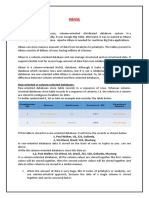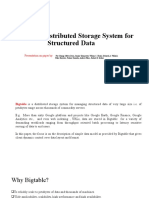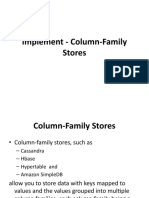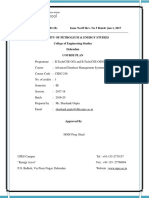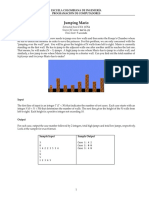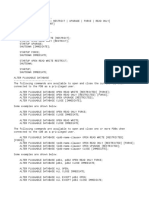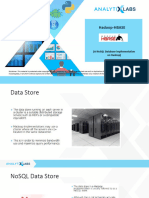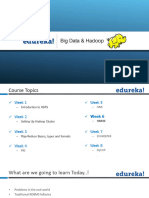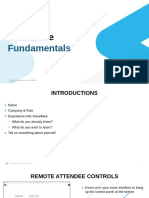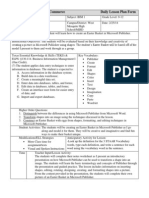100% found this document useful (1 vote)
172 views47 pagesLesson 6 NoSQL Databases HBase
The document discusses HBase, an open-source NoSQL database that provides big data storage and access across clusters of servers. It explains the architecture and components of HBase, including how it uses a master node and region servers to partition and store data across nodes in a Hadoop cluster. Key differences between HBase and relational databases are also outlined, such as HBase's use of dynamic schemas and horizontal scaling for high performance and scalability.
Uploaded by
Keerthi Uma MaheshCopyright
© © All Rights Reserved
We take content rights seriously. If you suspect this is your content, claim it here.
Available Formats
Download as PDF, TXT or read online on Scribd
100% found this document useful (1 vote)
172 views47 pagesLesson 6 NoSQL Databases HBase
The document discusses HBase, an open-source NoSQL database that provides big data storage and access across clusters of servers. It explains the architecture and components of HBase, including how it uses a master node and region servers to partition and store data across nodes in a Hadoop cluster. Key differences between HBase and relational databases are also outlined, such as HBase's use of dynamic schemas and horizontal scaling for high performance and scalability.
Uploaded by
Keerthi Uma MaheshCopyright
© © All Rights Reserved
We take content rights seriously. If you suspect this is your content, claim it here.
Available Formats
Download as PDF, TXT or read online on Scribd
/ 47
